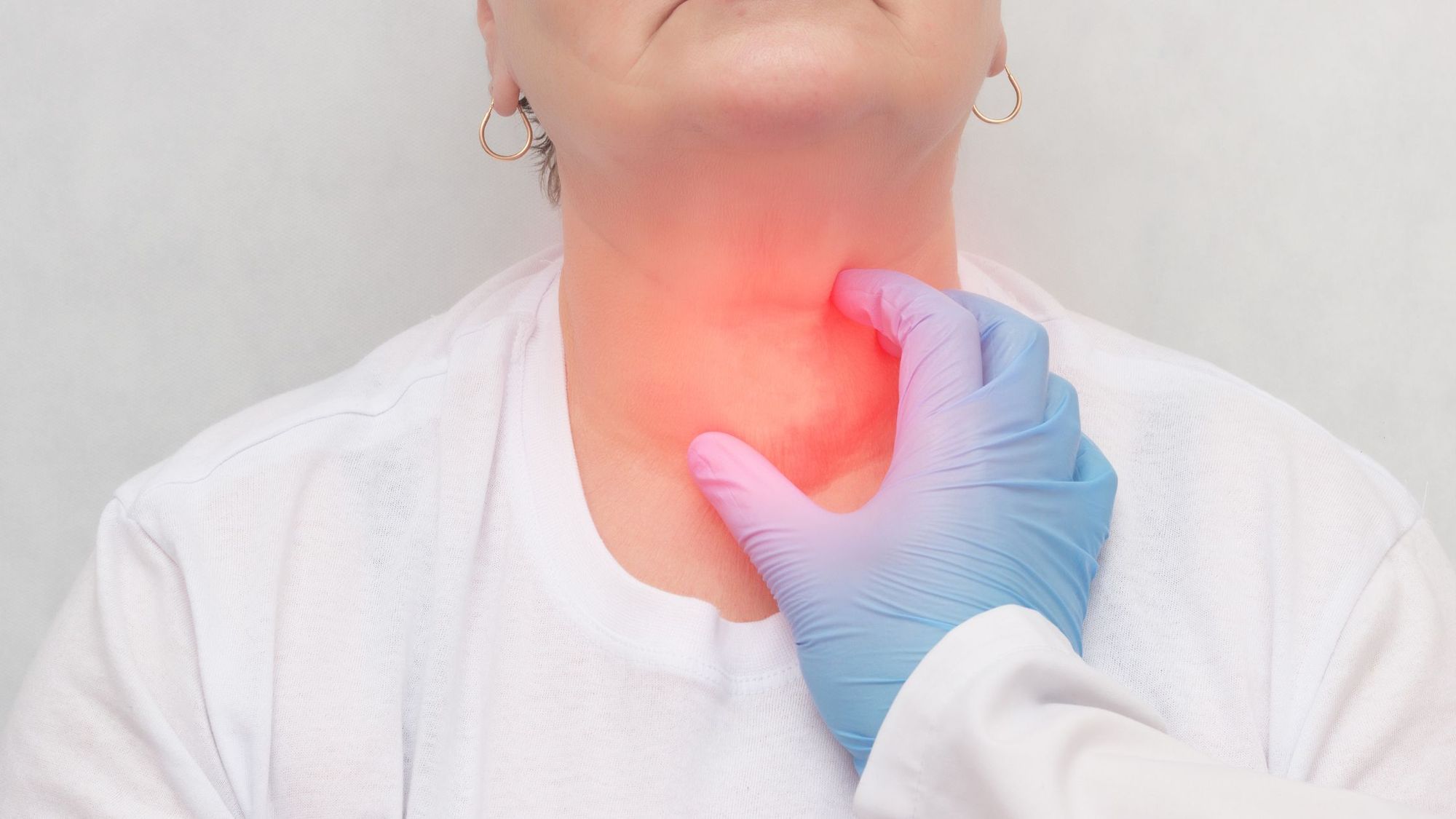
The word cancer tends to trigger people into a sense of fear, regardless of the disease’s variant. But in this case, ignorance doesn’t always mean bliss. About 30-50% of all cancer cases are preventable, so taking early action with the right knowledge can make all the difference.
And with thyroid cancer, you can especially tip the scales in your favor by understanding its mechanisms, causes, and what you can do day-to-day to prevent it.
So what is thyroid cancer? It’s a cancer that develops in the cells of the thyroid gland, a small, butterfly-shaped gland located in the neck that produces hormones responsible for regulating your metabolism. While the exact cause of thyroid cancer is not fully understood, there are several factors that can increase a person’s risk of developing it.

Signs and Symptoms of Thyroid Cancer
In many cases, thyroid cancer does not cause any noticeable symptoms in its early stages. However, as the cancer grows, that’s when you’ll see clearer signs and symptoms. Some of the these include:
- A lump or nodule in the neck: This is one of the most common signs of thyroid cancer. The lump or nodule may be painless or tender to the touch.
- Pain in the neck or throat: Some people with thyroid cancer may experience pain in the neck or throat, particularly when swallowing.
- Hoarseness or other changes in the voice: Being located in the neck, thyroid cancer can also cause your voice to become hoarse for 3 weeks or longer, along with other changes that last a long time.
- Difficulty swallowing: As the cancer grows, it may begin to interfere with swallowing, making it difficult to eat or drink.
It’s important to note that these symptoms can also be caused by other medical conditions, such as contracting the mumps virus. It’s key that you speak with a doctor if you experience any of these symptoms to plan your actions properly and avoid misdiagnosing your condition.

Risks You Can’t Control
Before any of the symptoms arise, it would help you to understand if you’re more at risk of developing thyroid cancer. It can be a scary process, but there are major benefits to knowing the risks you can control and those that you can’t. If anything, it at least gives you agency.
One of these major risks for thyroid cancer is your genetics. Inherited genetic mutations, such as mutations in the RET gene, can increase a person’s risk of developing thyroid cancer. Additionally, some inherited genetic conditions, such as multiple endocrine neoplasia type 2 (MEN2), can also increase the risk of thyroid cancer.
Additionally, it’s not clear why, but it’s been recently observed that thyroid cancer tends to be diagnosed more frequently in women than in men. Rest assured, plenty of research is underway to study why gender holds the significant risk factor it does.
What You Can Control
According to the American Cancer Society, radiation exposure is a proven contributing risk factor for developing thyroid cancer. People who have been exposed to high levels of radiation, especially in childhood, have a higher risk of developing thyroid cancer. This includes individuals who have received radiation treatments for other medical conditions, such as Hodgkin’s lymphoma or childhood cancers.
A while back, children were often treated with radiation for conditions that don’t require it. Nowadays, you have more options with the advancement of medical technology, and children aren’t exposed to more radiation than is necessary.
However, while you can make proactive, informed decisions in your medical treatments, it may be harder to move away from areas with radioactive fallout to radioactive fallout from power plant accidents or similar tragedies.
Using DNA Testing to Prevent Thyroid Cancer
Earlier on, we mentioned that you can inherit certain genetic mutations that will increase your likelihood of developing thyroid cancer. So how does your DNA help you do the opposite and minimize your risks of thyroid cancer?
The answer lies with genetic testing, and we don’t just mean screening for these genetic mutations. With CircleDNA’s at-home genetic tests, you can also reveal hundreds of insights into how your DNA shapes your optimal diets, exercise types, and much more. That is to say, your lifestyle choices will also affect your thyroid cancer risks, especially when it comes to obesity and poor eating habits.
In the long run, the everyday choices empowered by these health insights can allow you to tackle any potential disease risks, not just thyroid cancer, with confidence.





